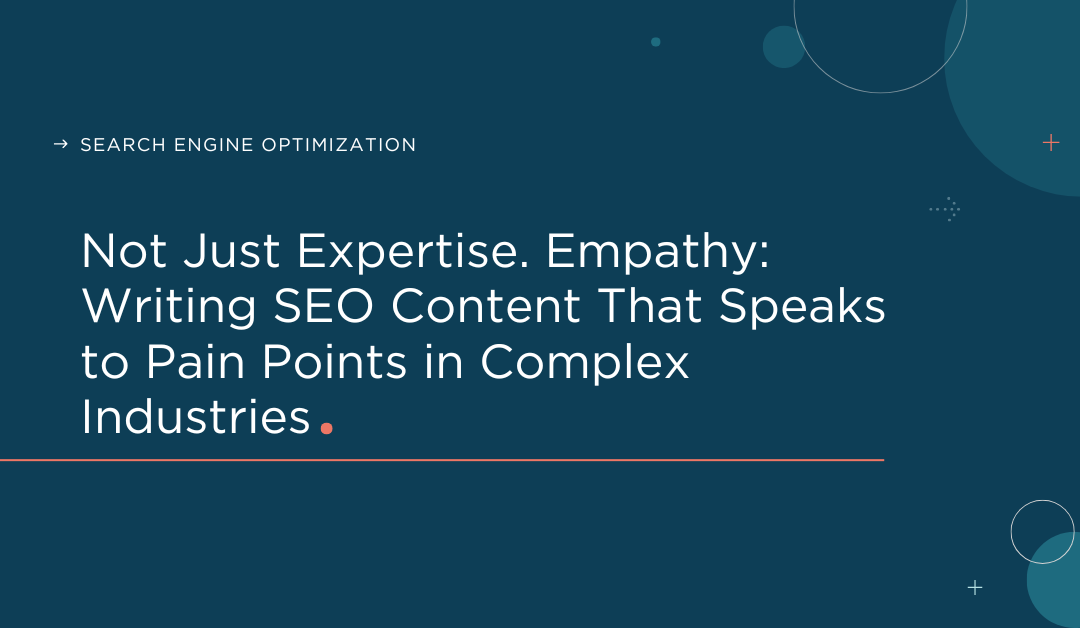Creating great marketing content is a lot of work. On average, it takes about 3.5 hours to write a blog article, and that doesn’t account for all the other background work that goes into it.
There’s market research, strategy development, content calendar, project management, editing, and creative design. Not to mention implementing it on your website, socials, and email.
With all the work that goes into each piece of high-quality content (whether you do it yourself or outsource it to a legal marketing agency), you might ask yourself: How can I get more mileage out of my content? And, more importantly, how do I do so in a way that furthers my law firm’s business goals?
The answer to these questions is surprisingly simple: by implementing a content waterfall strategy.
What is a content waterfall strategy?
A content waterfall refers to a systematic approach in content marketing that takes a core piece of content (often called “pillar content”) and reuses it across different channels.
These repurposed pieces can take a number of different forms. Common ways to leverage your core piece of content include:
- Blog posts
- Infographics
- Social media series
- Video
- Emails
This strategy not only creates consistent messaging but also maximizes the use and reach of that initial piece of content.
The key to getting a real return on investment with your content waterfall is to align your core content with your key business goals. With a content waterfall strategy, you can target your resources to areas of your law firm that you want to grow rather than taking a scattershot approach.
How content waterfalls can benefit your law firm
Let’s state the obvious first: content waterfall strategies support consistent content marketing for your law firm. It’s a lot less work to build out closely-themed content than it is to create content around disparate subjects. It’s also easier to stay on message when you develop batches of content together.
But let’s dig deeper. Here are some more things the content waterfall strategy delivers.
Authority and trust
A content waterfall strategy helps your law firm become a recognizable authority in a particular subject.
Let’s say a lead looking for resources about employment disputes visited your website. Would they be more likely to take the next steps with your firm if they found:
- A downloadable Guide to Dealing with Employment Disputes in Washington, three different blog articles dealing with employer rights and responsibilities, and a video series in which you answer common employment law FAQs
- A hodgepodge of employment-related posts dealing with niche questions that are sprinkled among various other topics
The greater the authority you establish on a topic, the more likely your audience will trust you.
Search engine optimization
Creating a stronger body of content via a content waterfall can also enhance your law firm’s SEO by increasing keyword volume and aligning content with user intent. As a result, your firm’s findability increases substantially.
How to start building a content waterfall for your law firm
If the idea of more content—and more reach—appeals to you, you’re in luck. The following steps will guide you through the waterfall process.
Market research and planning
Like most marketing initiatives, your content waterfall should start with some good, old-fashioned research. The topic you focus on should represent a core part of your business plan, so delve into how you want to position the topic and your firm’s approach to it.
Answer questions like:
- What practice area or service do I want to focus on?
- Who is my target audience for this service?
- What are my ideal client’s primary concerns when they encounter this content?
- What does my ideal client need to get from the content?
- How will I position my firm in relation to their needs?
- How much use do I want to get out of my waterfall strategy? (i.e., how long/how frequently do I plan on using it?)
This information will help you establish clear goals for your content.
Create your core content
Your core content creates the base for your content waterfall. It needs to be sufficiently deep to pull numerous talking points or angles.
Good candidates for core content include guides, eBooks, long-form blogs, or service pages. There’s no required word count, but working with longer content (e.g., 1,200-1,500 words) provides more flexibility.
Umbrella concepts like “How Tos” or “The Definitive Guide to…” or “Everything You Ever Wanted to Know About…” work well as core content. Because they provide clear, authoritative insight, you can easily cascade numerous subtopics from them.
You don’t have to limit yourself to written content, either. You can use webinars, videos, presentations, CLEs, or other substantive content projects.
Marketing pro tip: optimize your content for conversions
Because you’re going to be leveraging your core content across numerous sites and continuously driving traffic to it, assess it for conversion rate optimization (CRO).
- Do you have clear calls to action?
- Are your buttons easy to identify?
- Is your content scannable?
- Do you have relevant headers and subheadings?
- Are your forms user-friendly and clearly labeled?
- Do your forms display on mobile?
- Are your forms protected by CAPTCHAs?
- Do you have a confirmation page set up?
Create a plan to repurpose content
Once you have your pillar content, break it down into smaller, manageable subtopics. Each subtopic can be used for blog posts, social media posts, or infographics.
For example, if your pillar content is a comprehensive guide on “Understanding Personal Injury Claims,” you could have blog posts on “How to file a Personal Injury Claim,” “What compensation can you expect from a Personal Injury Claim,” and “Common mistakes to avoid when making a Personal Injury Claim.”
You could turn key statistics or information into infographics or a LinkedIn series. You could even take the original content piece and turn it into an on-demand webinar or a series of YouTube videos. You’re only limited by your creativity.
Don’t forget that each piece of content should link back to your main pillar content.
Marketing pro-tip: make your content waterfall part of your content calendar
How much do we love content calendars at FocusWorks? A lot.
Content calendars give structure and focus to all your content work, including any content waterfall projects. Even if you already have a content calendar for SEO or ongoing blogging activities, you can still weave your content waterfall strategy into it.
Once you’ve identified potential subtopics and formats for your waterfall, add them to your content calendar along with publish dates to make them easy to track.
Create your content!
This is the fun part of the process! For content waterfall projects, it’s easier to manage the work if you batch it together rather than spreading it out over time. This approach allows for greater consistency in messaging and branding and reduces the work you need to do later down the road.
Build in enough time for the process, though! Because numerous activities are involved (writing, proofreading, graphic design, posting, and scheduling—and potentially more), don’t try to conceptualize AND create a waterfall in a compressed timeline.
Marketing pro-tip: create templates to make batching easier
With templates in place, it’s easier to get down to the work of copywriting. Templates can increase your creativity and your bandwidth by reducing the mental load of setting up content tasks. Templatize your blog posts with sections, social media posts with hashtags, and graphics with your branded colors and logos.
Track your metrics
Finally, no marketing project is complete without a thorough review of marketing data.
Evaluate the performance of each content piece so you can adjust your strategy as required based on what resonates most with your audience. Look at each piece individually, but also consider the whole. Is your waterfall effectively moving your audience towards the same goal?
Metrics to add to your reporting include:
Website
- Page
- Keyword ranking
- Downloads (if applicable)
- Click through rates
- Traffic source
- Conversion rate
- Average engagement time
- Bounce rate
Social media
- Impressions
- Reach
- Follower/subscriber growth
- Click through rate
Email campaigns
- Opens
- Click through rate
- Subscribe/unsubscribe
Make marketing less work with FocusWorks Marketing
Creating an effective content waterfall strategy can dramatically boost your law firm’s visibility, generate more leads, and convert more prospects. But it can be a time-consuming endeavor, and it requires marketing expertise.
When you collaborate with FocusWorks Marketing, we’ll create a robust content strategy that amplifies your firm’s unique strengths, gets your law firm in front of the right audience, and positions you as a trusted authority among your ideal clients.
Start your waterfall today. Contact FocusWorks Marketing to begin.



